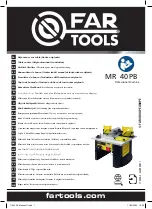
40
filter
Switch(config)# show ip igmp
filter interface [port_list]
[port_list]
Show the specified ports
’ IGMP
Filtering status.
Switch(config)# show ip igmp
profile
Show IP multicast profile information.
Switch(config)# show ip igmp
profile [profile_name]
[profile_name]
Show the specified profile
’s setting.
Switch(config)# show ip igmp
segment
Show IP multicast segment
information.
Switch(config)# show ip igmp
segment [1-400]
[1-400]
Show the specified segment
’s
setting.
Switch(config)# show ip igmp
static-multicast-ip
Show static multicast IP table.
Switch(config-segment-ID)# show
Show the selected segment
’s setting.
Switch(config-profile-ID)# show
Show the selected profile
’s setting.
Switch(config)# show ip
sourceguard interface
Show each interface
’s IP
sourceguard type.
Switch(config)# show ip
sourceguard static-ip
Show the IP source binding table for
sourceguard function.
IGMP & Interface example
Switch(config)# interface1-3
Enter several discontinuous port
numbers separated by commas or a
range of ports with a hyphen. For
example:1,3 or 2-4
Switch(config-if-1-3)# ip igmp filter
Enable IGMP Filter on port 1 to port
3.
Switch(config-if-1-3)# ip igmp filter profile
Silverprofile
Assign the selected ports to the
specified profile
“Silverprofile”.
Switch(config-if-1-3)# ip igmp max-groups 400
Set the maximum number of
multicast streams to 400.
Switch(config-if-1-3)# ip igmp static-multicast-ip
224.10.0.5 vlan 50
Create a static multicast IP to VLAN
entry.
2.6.8 IPv6 Command
Brief Introduction to IPv6 Addressing
IPv6 addresses are 128 bits long and number about 3.4×1038. IPv6 addresses are written in eight
groups of four hexadecimal digits separated by colons, such as
2001:0db8:85a3:0000:0000:8a2e:0370:7334
IPv6 unicast addresses other than those that start with binary 000 are logically divided into two
parts: a 64-bit network prefix and a 64-bit interface identifier.
Stateless Autoconfiguration
IPv6 lets any host generate its own IP address and check if it's unique in the scope where it will be
used. IPv6 addresses consist of two parts. The leftmost 64 bits are the subnet prefix to which the
host is connected, and the rightmost 64 bits are the identifier of the host's interface on the subnet.
This means that the identifier need only be unique on the subnet to which the host is connected,
which makes it much easier for the host to check for uniqueness on its own.
















































